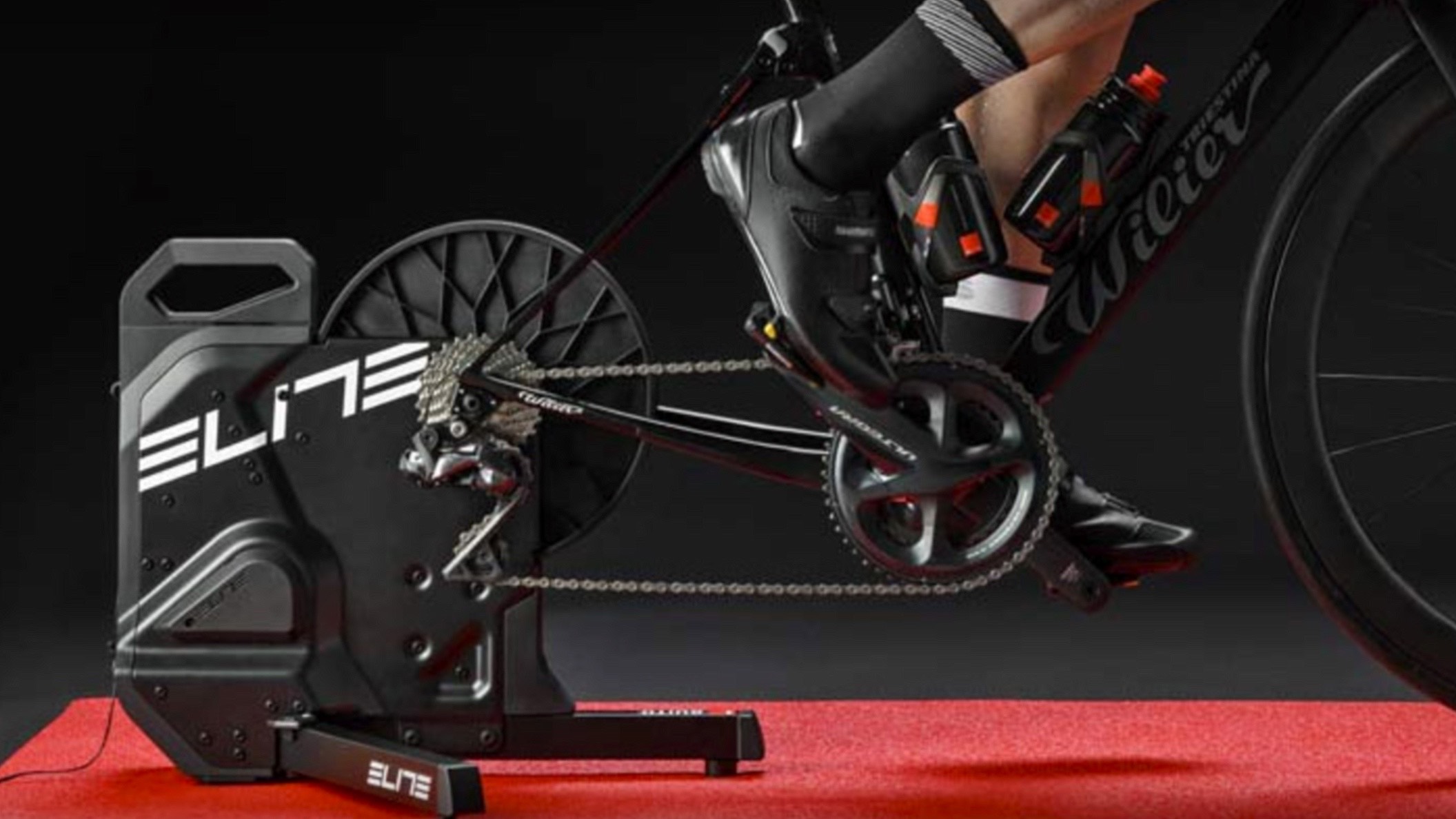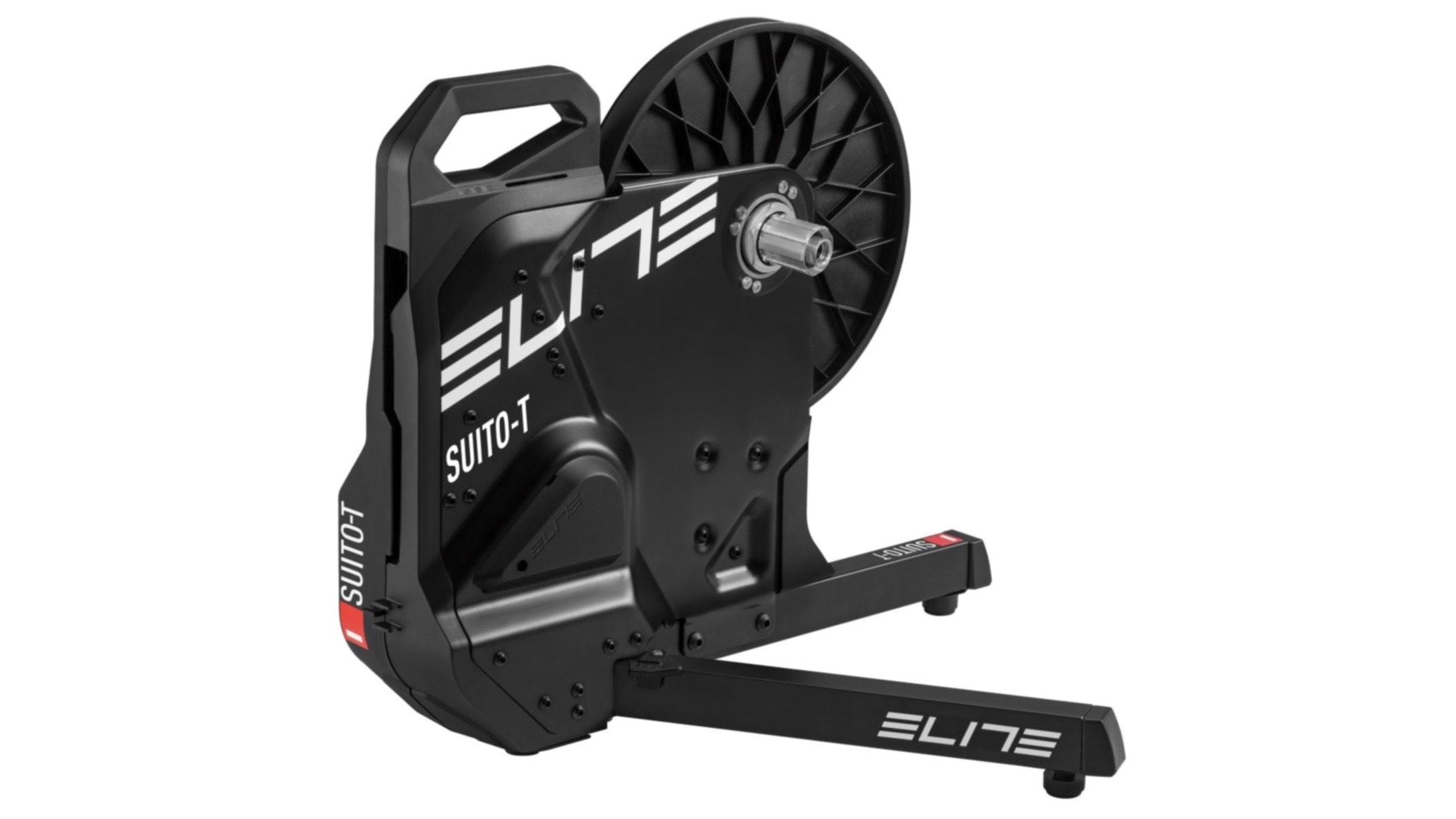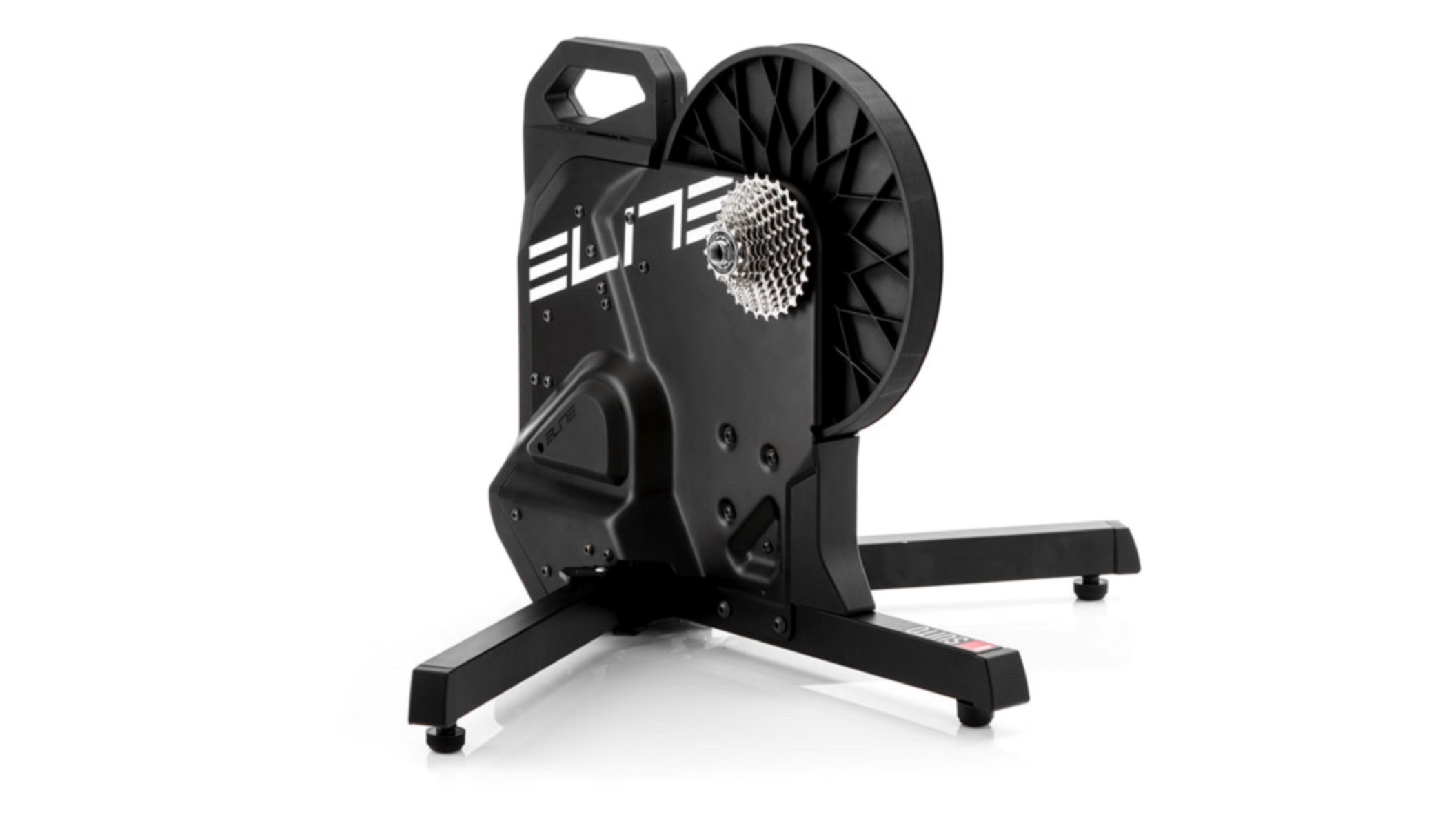Elite Suito review: a superb value turbo trainer that's great for Zwift
Elite Suito is easy to setup – with one notable caveat – and a joy to ride and train on


The Elite Suito is one of the best indoor turbo trainers in its price range. It's easy to set up and connects seamlessly with Zwift, SYSTM and ANT+ devices. Not to mention, the Suito is extremely quiet to use.
-
+
Easy setup
-
+
Smart trainer measures power, speed and cadence
-
+
Integrates easily with Zwift, Sufferfest, Apple and Android devices
-
+
Compact, easy-to-store design
-
+
Relatively quiet
-
-
Direct drive, so you need your bike to have compatible gear cassettes
-
-
No longer seems to come supplied with cassette
Why you can trust T3

Here's the Elite Suito review in a sentence: one of the best indoor turbo trainers in its price range, once you've figured out how to get your road bike safely attached to it, at any rate.
Gone are the days where you’d need to splurge a four-figure sum to get a decent smart trainer: the Elite Suito offers a raft of technology and metrics at a more accessible price, and it’s in a stable, sturdy and neatly compact form too.
The best turbo trainers are no longer just about grinding out virtual miles while the weather is too bad for outside riding. Instead, modern trainers aim to simulate as accurately as they can the sensation of riding outside, including the increased resistance you get when climbing. Apps such as Zwift, Sufferfest, Trainer Road et al make the whole experience more structured, more scientific and, dare I say it, more fun.
To reap the highest rewards from time on the turbo, it’s useful to have metrics to hand like power, cadence and speed, and smart trainers measure all this and more, integrating with your app/s of choice so you know exactly how much work you’re doing right down to the last watt.
With the Elite Suito, the kind of metrics you used to need to pay top dollar for are now available at a much more accessible price, making it perfect for anyone who wants to up their fitness at home. Oh, and in case you were wondering, 'Suito' apparently means 'haste' in old Venetian. So hurry up and read the rest of my review!
- Tacx Boost review: a cheap turbo trainer, but one that cuts a few too many corners
Elite Suito review: Price and availability
Available direct from Elite, as well as from bike and big online retailers, Elite Suito officially costs £640 in the UK, although it can sometimes be found for less. In the USA it can be had for $899 and in Australia, around AU$1,100. For such a well-specced turbo trainer, that is something of a bargain.

Elite Suito review: Setup
One of the great things about the Elite Suito used to be how easy it was to set up, and at least part of the process is still very simple. Firstly, there’s almost no assembly required. In the box you get the smart trainer, the power cord, a block for resting your front wheel on, a thru-axle for connecting your bike to the trainer via the rear axle, and an instruction manual.
Get all the latest news, reviews, deals and buying guides on gorgeous tech, home and active products from the T3 experts
Well, I say that’s what you get; that’s what you got when I received the Suito in 2020. Since then, possibly due to a global shortage of bike parts, the Suito no longer comes with a cassette installed. Instead, you’ll need to find one yourself, plus the tools to install it which is a relatively easy process, but a whole extra layer of faff. The Suito is compatible with Shimano and SRAM 9, 10 and 11spd cassettes, though you can fit Campagnolo and SRAM XDR with the use of an adaptor.
This is a direct drive trainer, which means that rather than resistance coming from your rear tyre rolling against a resistant surface, the bike’s drivetrain is directly connected to the trainer. To do this, you remove the rear wheel, and attach the turbo in its threading the chain around the cassette, and popping the thru-axle through the axle – hence the name, you see – and tightening it.
Once it’s all out of the box, and assuming you’re all good with the cassette, the next step is to unfold the support struts which brace the trainer against the floor and add stability, and plug it in. You’ll see a few little lights next to the handle; those tell you whether the turbo is plugged in, and whether it’s connected or ready to be connected to ANT+ or Bluetooth devices.
At this point, following the instructions and with Zwift, my preferred home training programme, live on my tablet screen, started pedalling. Lo and behold, Zwift recognised that I was on an Elite Suito turbo trainer, and basically everything just talked to each other from there. As someone who's struggled with getting one device to talk to another on trainers that have been described as ‘easy to set up’, this was a magical moment.
Zwift recognised my cadence, controlled the resistance remotely on the Suito to simulate the virtual climbs and descents I was riding on, and made the whole experience the most stress-free set up process I think I’ve ever gone through.
When you connect, Zwift recognises it’s a new device and offers a calibration programme which is a good idea to do and is quick to run through; it’ll ensure you get the best accuracy going forward.

Elite Suito review: Connectivity and compatibility
As mentioned, the Elite Suito can both transmit and receive using both ANT+ and Bluetooth which covers pretty much every device and app you can think of. Transmitting means it can send data like your speed, cadence and power to a bike computer, smart training watch or app (such as Zwift, Trainer Road or Training Peaks) - these devices should also be able to receive data from, for example, a heart rate band; combine all this and you’ve got an excellent measure of your performance for fitness monitoring and development.
Receiving means that when you use a training app like Zwift, which often works by taking you for a ride through a virtual environment complete with climbs and descents, Zwift will automatically and remotely alter the resistance on the trainer to simulate the virtual environment. It’s a bit like a full-body workout computer game. What this means for the rider is that you can just pick a route or workout, and focus on your performance rather than dialling up and down the resistance.

Elite Suito review: Performance
I cannot emphasise enough how happy the fact that Elite’s ‘plug and play’ simple set up claim is accurate makes me; it took all the stress out of it and meant I could get on with training.
When in use, the feeling is surprisingly natural, including the resistance shifts which do feel like you’ve started to go uphill. Compared to resistance based rollers, it’s a whole lot nicer to use, and remarkably quiet - not silent, but you could, if you wanted, watch a film while spinning your legs and still be able to hear the TV without boosting the volume.
Because it’s easy to use, feels natural to use, and works seamlessly with my various apps and devices, I’ve found myself hopping on it more and more since many of those little annoyances and barriers have been removed. I wouldn’t go so far as to say it’s a pleasure - I still prefer riding outside - but for indoor training it’s the best experience I’ve yet had on a smart trainer.
Another big selling point of the Eilte Suito, particularly for anyone who is space poor or perhaps wants one that’s relatively portable, is that the unit is compact, fairly light compared to other turbo trainers on the market, and the struts that flare out for stability when in use fold back close to the body of the trainer when it’s not in use. You can then easily tuck it behind a door, in a cupboard or under the bed as it’s roughly rectangular cuboid shape is compact and neat. It’s also light enough to shift about and reposition with relative ease thanks in part to the inclusion of a handle.
Elite Suito review: verdict
I really rate the Elite Suito for indoor training; it’s ideal for anyone who likes to use apps and data to maximise their bike time, who doesn’t have a lot of space, who prefers a quieter trainer and who likes the more natural ride feel of a direct-drive machine.
The setup is extremely easy, and everything seems to work as advertised, including the ‘plug and play’ element. In fact, this would have scored a perfect 5 stars, if it weren’t for the fact it no longer comes with a cassette. Having one installed adds a significant layer of effort that's all the more frustrating because it used to just come as part of the package.
However, once you've got out your tool box, watched a few YouTube tutorials and got your cassette in place, the Elite Suito is a pleasure to use and ride, and a bargain at its price. Highly recommended, then.
Elite Suito review: Also consider
One slightly more expensive option is Wahoo Kickr Snap. That's Wahoo's entry-level turbo trainer and a considerably better one, in our opinion.
Finally, the Pinnacle HC Turbo Home Trainer is a high-performing own-brand smart trainer at an impressively low price. Barely audible noise output, smooth resistance matches the onscreen incline changes and seamlessly easy setup makes this a solid option for those looking to enter the smart trainer market for indoor cycle training.
Writer, journalist and Spindrift Podcast host Aoife has over 10 years product-testing experience, and has written and reviewed for Red Bull, MBUK, Trek UK, Bikeradar, BikePerfect, Cycling Plus, Fit&Well and of course T3 (and a few others). A keen cyclist, mountain biker and outdoor adventurer, you’ll usually find her out in the forests or up a mountain somewhere.
